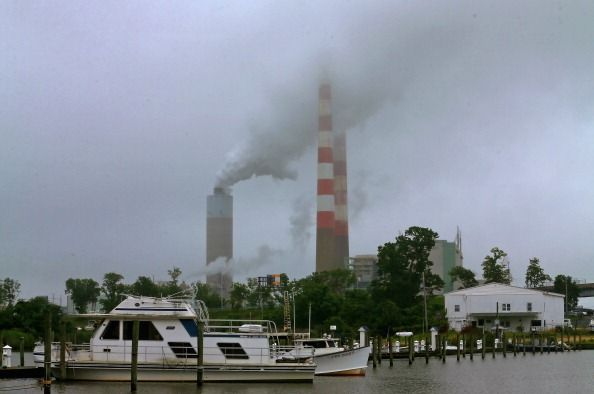The Clean Air Act’s second act
By Dan Drollette Jr | June 2, 2014

In an effort to bypass a stalemate in Congress, the Obama administration has announced a new rule that aims to cut US carbon dioxide emissions from existing power plants by 30 percent over 2005 levels. This executive action comes via an Environmental Protection Agency regulation issued under the authority of the 1970 Clean Air Act Extension.
The new emissions standards offer states flexibility in how they will bring about the required reductions but doubtless will lead to the closing of some dirtier, older, coal-fired power plants. Governments from around the globe are expected to closely study the new EPA regulation, as a rough indicator of just how aggressive they themselves should be.
“This standard is the real test of how serious the Obama climate action plan really is,” Qi Ye, director of the Climate Policy Center at Tsinghua University in China, said in an interview with The New York Times. “If the standard is really stringent, that will make a difference in the domestic debate in China,” Qi added. His comments are significant; China is the world’s largest contributor to global warming.
Much of the news coverage so far has focused on the legal battles that allowed the EPA to regulate carbon dioxide as a pollutant, and the anticipated legal battles to come. It was only in 2007 that the Supreme Court finally ruled that greenhouse gases can be considered air pollutants and therefore subject to the Clean Air Act.
But what of the original act itself, and the country’s mood regarding it? A modern reader might be surprised at the amount of unity over pollution issues in 1970, when the Clean Air Act Extension passed the Senate by 73-0, and the House by 374-1. Even more shocking: It was ushered in by a Republican, President Richard Nixon—hardly a tree-hugging environmentalist—who also established the Environmental Protection Agency in that same legislation.
What a difference 44 years makes.
But the Bulletin has covered atmospheric pollution as a technologically created threat to humanity since the late 1950s and early 1960s. The concerns of articles published back then sound disconcertingly familiar today.
“It is not easy for the scientist who knows the facts to express the urgency of the problem of air conservation in ways that cause creative public policy to be developed,” wrote James P. Dixon, then president of Antioch College, in 1965.“The layman’s concern about air pollution has usually been limited to what he could smell and see. He has been less concerned about the chemistry, physics, and physiology of air pollution than about its esthetics.”
Later, in 1973’s “Los Angeles and its Mistress Machine,” Bulletin contributor Wesley Marx wrote something that could have been published this afternoon: “How Congress and Capitol Hill will react to the side effects of the 1970 Clean Air Act remains to be seen. Undoubtedly there will be appeals made to revise the Clean Air Act to make it ‘more realistic and practical.’ ”
But what sounds most pertinent to today’s readers is a 1961 Bulletin story, in which environmental epidemiologist John R. Goldsmith wrote: “The stench and dirt which have afflicted communities with heavy industry were once considered a desirable index of prosperity. Only recently have we recognized that this pollution is not only unnecessary but often definitely harmful to plants, property, and human health… We owe it to our neighbors, to ourselves, and to our progeny to develop a code of conduct which forbids throwing garbage into the atmosphere just as we are enjoined now not to throw refuse into the streets or rivers. We have learned to use alternative ways of disposing of other wastes; we can certainly teach the desirability and develop techniques for reducing the aerial sewage with which so many of our cities are blighted. What is needed is a devotion to air hygiene, a conviction that dirty air is bad, and that it is preventable. This is not simply a matter of uttering the right words—it is a matter of embedding them in our contemporary culture and laws.”
Editor's note: The full archive of Bulletin print issues–from 1945 to 1998 and complete with covers and other illustrations–is available here.
Together, we make the world safer.
The Bulletin elevates expert voices above the noise. But as an independent nonprofit organization, our operations depend on the support of readers like you. Help us continue to deliver quality journalism that holds leaders accountable. Your support of our work at any level is important. In return, we promise our coverage will be understandable, influential, vigilant, solution-oriented, and fair-minded. Together we can make a difference.
Topics: Analysis, Climate Change















